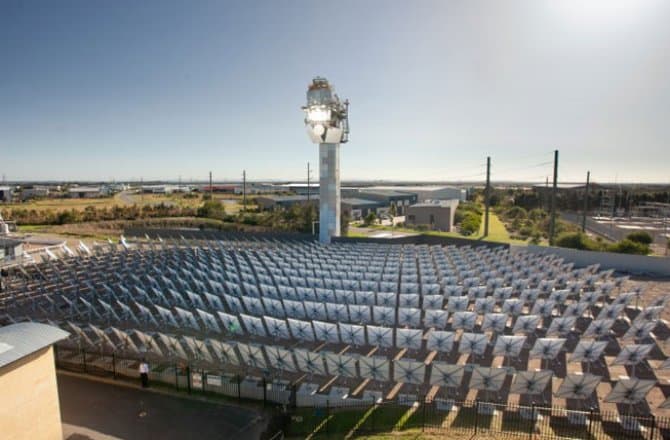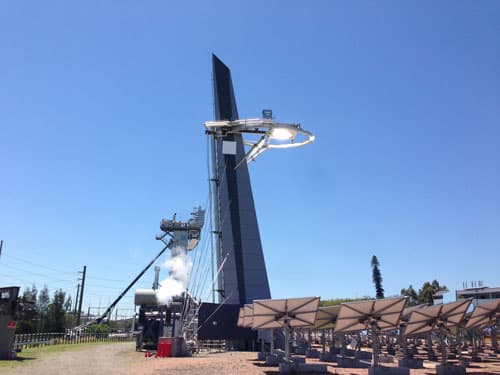CSIRO Achieves 'Supercritical' Steam, Marks Major Breakthrough In Solar Power Development
The Australian government's Commonwealth Scientific and Industrial Research Organisation (CSIRO) has used solar energy to generate hot and pressurized ‘supercritical’ steam. This result is quite a breakthrough for solar energy since it was only through the use of fossil fuels that such high temperatures and high pressures had been achieved. Producing supercritical steam with zero emissions surely is a good news for Australia who have 90 percent of their electricity produced using fossil fuels.

The world record, set in May this year, was at a pressure of 23.5 Mega-pascals, and temperatures up to 570 degrees Celsius. This pressure and temperature was achieved at the CSIRO Energy Centre, Newcastle. The Centre includes two solar thermal test plants featuring more than 600 mirrors (heliostats) directed at two towers housing solar receivers and turbines. Although the technology needs to be refined in order to be commercialized, the results seem to have silenced the critics of commercial solar power usage, who point out the high costs of solar panels and other equipment.

CSIRO's Energy Director, Dr Alex Wonhas compared the feat to that of breaking the sound barrier and further said that the achievement of his organisation was a 'game changer'.
Source: #-Link-Snipped-#
Supercritical solar steam is water pressurized at enormous force and heated using solar radiation. Typically, the water pressure is above the critical pressure of water (22.06 MPa) and above the critical temperature (373.946 °C) for it to be 'supercritical' steam. Plants all over the world use subcritical steam , operating at similar temperatures but at lower pressure. If these plants were able to move to supercritical steam, it would increase the efficiency and help to lower the cost of solar electricity.
The world record, set in May this year, was at a pressure of 23.5 Mega-pascals, and temperatures up to 570 degrees Celsius. This pressure and temperature was achieved at the CSIRO Energy Centre, Newcastle. The Centre includes two solar thermal test plants featuring more than 600 mirrors (heliostats) directed at two towers housing solar receivers and turbines. Although the technology needs to be refined in order to be commercialized, the results seem to have silenced the critics of commercial solar power usage, who point out the high costs of solar panels and other equipment.

CSIRO's Energy Director, Dr Alex Wonhas compared the feat to that of breaking the sound barrier and further said that the achievement of his organisation was a 'game changer'.
Source: #-Link-Snipped-#
0
